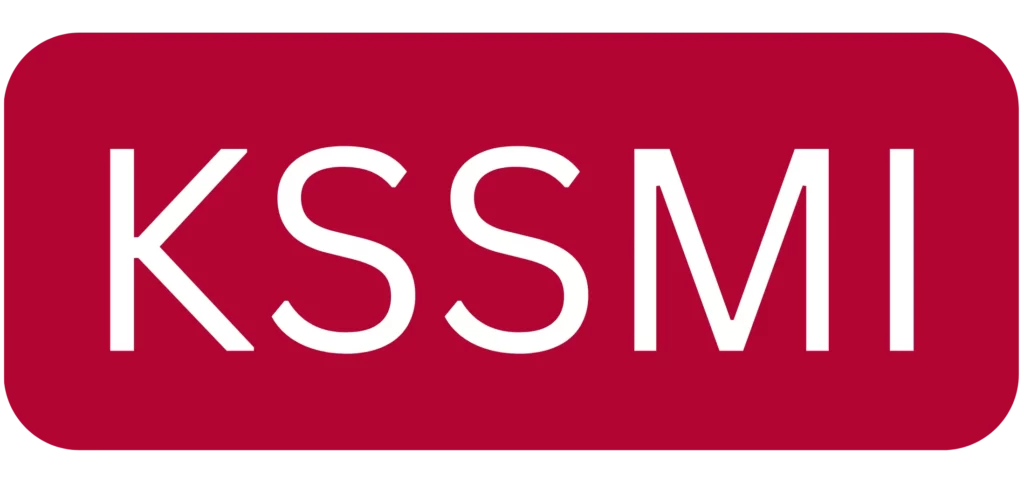Your first major production run has arrived. Boxes are stacked, and the success of your launch rests on the quality inside. How do you know if it’s right? Many brands rely on a simple visual check, but this leaves them vulnerable to subtle, costly errors. This guide provides more than a checklist; it delivers a professional framework for transforming quality control from a hopeful guess into a managed, data-driven system that protects your brand and your investment.
A professional quality control (QC) process uses statistical sampling and a defined quality standard called an Acceptable Quality Limit (AQL) to verify an entire production batch. Instead of a simple visual check, it involves a step-by-step inspection of cosmetic, dimensional, and functional attributes against a pre-approved “Golden Sample” to ensure every unit meets your brand’s specific tolerance for excellence.
The Principles of Professional QC: Moving Beyond 100% Inspection
Why You Can’t Check Every Single Frame: An Introduction to Statistical Sampling
Attempting to inspect 100% of a large production run is not only economically unfeasible but also practically impossible. For any significant volume, a full inspection requires a massive investment in time and manpower. More importantly, inspector fatigue increases during long, repetitive checks, leading to human error and allowing more defects to pass through than a structured statistical sampling method would.
Definition: Statistical sampling is the process of selecting a specific number of units at random from a larger production batch (a “lot”) and inspecting them for defects. The results are then used to make a statistically valid decision about the quality of the entire lot. If the defect count is below a threshold, the batch is accepted; if it exceeds it, the batch is rejected.
Simple Analogy: Think of a quality inspector using statistical sampling like a chef tasting a spoonful of soup to judge the entire pot. The chef doesn’t need to drink the whole pot to know if it’s seasoned correctly. They trust that a single, well-stirred spoonful is representative of the whole batch, allowing for a confident decision without checking every drop.
Best Practice: The global standard that governs this process is ISO 2859-1, used in over 95% of all random sampling inspections for consumer goods. It provides standardized tables that tell an inspector exactly how many units to pull and what the maximum number of allowable defects is for a given quality level. This removes subjectivity and creates a clear, repeatable standard.
Defining Your Quality Standard: AQL (Acceptable Quality Limit) Explained
Definition: AQL stands for Acceptance Quality Limit. It is formally defined in the ISO 2859-1 standard as the “quality level that is the worst tolerable.” It is a statistical threshold for making a pass/fail decision on an entire production lot based on the findings from a small sample.
Critical Warning: AQL is a statistical tool for managing risk; it is not a guarantee that a shipment will contain no more than a certain percentage of defects. An AQL of 2.5% does not mean the shipment contains only 2.5% defects. It means you have agreed on a sampling plan where there is a high probability of accepting a lot if the actual defect rate is 2.5% or lower.
To use AQL, you must first classify defects based on their severity. This allows you to set the appropriate risk threshold for each type of potential failure.
- Critical Defects: A defect that is hazardous or unsafe for the user or violates regulations (e.g., a sharp point). The AQL is always 0, meaning one critical defect fails the entire inspection.
- Major Defects: A defect likely to result in product failure, reduce its saleability, or be noticed by a consumer, leading to a return (e.g., a stiff hinge, a visible scratch).
- Minor Defects: A small deviation from specifications that is unlikely to affect function and would not be noticed by most users (e.g., a tiny polishing mark on an inside surface).
The Bottom Line: For most consumer products, including eyewear, the commonly accepted AQL standards are 0.0 for Critical, 2.5 for Major, and 4.0 for Minor defects. In my two decades of experience, I’ve seen that premium or luxury brands often set a tighter standard for Major defects, such as 1.5, to reflect higher consumer expectations.
The Golden Sample: Your Single Source of Truth
Definition: A Golden Sample, or approval sample, is a perfect, pre-production unit of your product that has been formally approved by you. It is made with the exact materials, tooling, and processes that will be used for mass production, serving as the ultimate physical benchmark for quality.
Most Importantly: The Golden Sample functions as a physical contract that transcends language and technical specification sheets. While a tech pack defines dimensions, the Golden Sample defines subjective but critical attributes: the exact feel of a polished finish, the precise tension of a hinge, and the balance of the frame. In any quality dispute, it is the final arbiter.
Best Practice: To make a Golden Sample a binding tool, you must manage it with discipline. Once a sample is perfect, document it with photos and formally sign it. At least three identical samples should be created: one for you, one for the manufacturer’s production line, and one for the third-party inspector. This ensures everyone is working from the same undisputed standard.
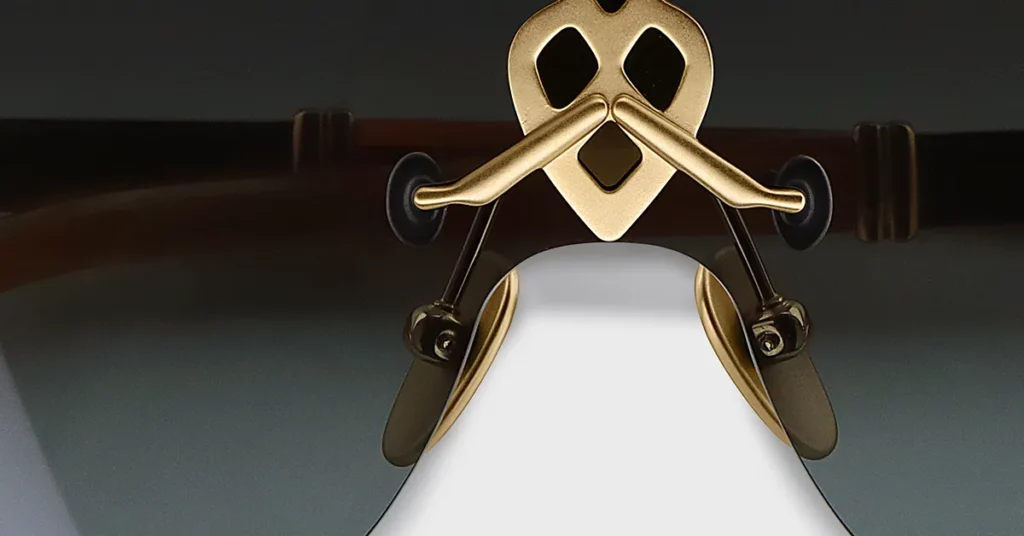
The Comprehensive QC Inspection Checklist: A Step-by-Step Guide
Part 1: The Visual & Cosmetic Inspection
A meticulous visual examination of the frame surface is the first step. This check, done under strong lighting, ensures the frame is free of scratches, dents, or tool marks. The color must be an exact match to the Golden Sample, and for materials like tortoiseshell acetate, the pattern and depth must be consistent. All logos and brand markings must be clear, correctly aligned, and pass a 3M tape test for adhesion without peeling or flaking.
The mechanical function of the hinges is also a critical quality indicator. Temples must open and close with a smooth, fluid motion, free of squeaking or grinding. The hinge should hold the proper tension. For metal frames, all soldering points must be clean and strong, with no visible gaps. For laminated materials, the bonding lines must be perfect, with no signs of separation.
Part 2: The Granular Dimensional Measurement Checklist
This is where you move from subjective visual checks to objective data. Using digital calipers, protractors, and templates, you must verify that the production units match the technical drawings. These checks are typically grouped by frame component.
- Eye Rim and Bridge: Key checks include the Eye Rim Width (Size A), Eye Rim Depth (Size B), and the Distance Between Lenses (DBL). These are the foundational measurements that ensure lenses will fit correctly and the frame will sit properly on the nose. You also verify the thickness, width, length, and curve of the bridge itself.
- Browbar and Endpiece: For frames with these features, you must confirm the width and thickness consistency of the browbar, the symmetry of any screws or pins, and the correct curve. The position, length, and dropping angle of the endpiece are measured to ensure the temples will fold and align correctly.
- Pad Arms and Soldering: Here, you measure the dimensions of the pad arm box and the pad arm wire itself. Crucial checks include the position of the soldering point on the frame, the movement angle of the nose pad (typically 20°–25°), and the opening angle of the pads (typically 40° and symmetrical).
- Temples: You must verify the Whole Temple Length, the third number printed on a frame. You also measure temple thickness at multiple points and the bending angle of the temple tip. Two of the most critical geometric checks are here: the Pantoscopic Tilt (7-12° angle of the frame front) and the opening angle of the temples.
- Overall Frame Geometry & Alignment: This final group verifies the total package. You measure the distance between hinge screws, the space between temple tips, and the total Width of the Whole Glasses Frame. You also check the Face Form Wrap, which is the curvature of the frame front that follows the natural curve of the face.
Part 3: Mechanical, Functional, and Packaging Inspection
This phase tests the durability and reliability of the frame. A sample of frames undergoes a hinge durability test, where the temples are opened and closed for thousands of cycles (e.g., 10,000-20,000) to ensure the screws remain secure and the action stays smooth. The strength of welded joints on metal frames is checked with a manual torsion test to ensure they can handle daily stress.
The adhesion of any coating or plating is verified with a cross-hatch test (ASTM D3359), where a grid is cut into the coating and tested with adhesive tape to ensure no flaking. The mounted lenses must be secure, with no rattling or risk of popping out. Finally, all packaging—boxes, cases, and barcodes—must be inspected for defects and to ensure the barcode is scannable and matches the product SKU.

The Kssmi Quality Framework: From Measurement to Management
Kssmi’s “Tolerance Tiers”: Connecting Precision to Brand Value
Most Importantly: Not all eyewear is created equal, and neither are the required manufacturing tolerances. Your brand’s position in the market—from accessible fashion to bespoke luxury—should directly inform the level of precision you demand. Tighter tolerances result in a better fit and finish but also increase costs. This framework aligns your brand promise with your technical specifications.
Simple Analogy: Think of it like a car engine. A standard family car engine is built with reliable, cost-effective parts and tolerances. A Formula 1 engine, however, is built with extremely tight, precise tolerances where every micron matters, because its performance standard is completely different. Your eyewear quality should be just as strategically aligned with your brand’s performance tier.
We classify manufacturing tolerances into three distinct tiers, allowing you to make a strategic choice about the level of quality for each collection. This transforms a simple measurement into a conscious business decision.
| Key Measurement | Tier 1 (Standard) | Tier 2 (Premium) | Tier 3 (Luxury) | Why It Matters (The “So What”) |
| Temple Parallelism | ± 2.0 mm | ± 1.0 mm | ± 0.5 mm | Determines if the frame sits straight. Tighter tolerance prevents a crooked fit. |
| Pantoscopic Tilt | ± 2.0° | ± 1.0° | ± 0.5° | Critical for optical performance. Incorrect tilt can induce prescription errors. |
| Face Form Wrap | ± 1.5° | ± 0.75° | ± 0.3° | Ensures correct frame curvature. Poor tolerance leads to an inconsistent aesthetic. |
| DBL (Bridge Width) | ± 0.5 mm | ± 0.3 mm | ± 0.15 mm | Directly impacts comfort on the nose. A tight tolerance prevents pinching or sliding. |
| Surface Finish Defect | Minor defect in Zone B | Minor defect in Zone C only | No visible defects | Defines aesthetic perfection. Luxury requires a flawless surface. |
Pro Tip: Zone A is the direct front of the eye rim, Zone B is the side of the frame, and Zone C is an unexposed area like the inside of the temple. Defining acceptable defect locations by zone is a common practice.
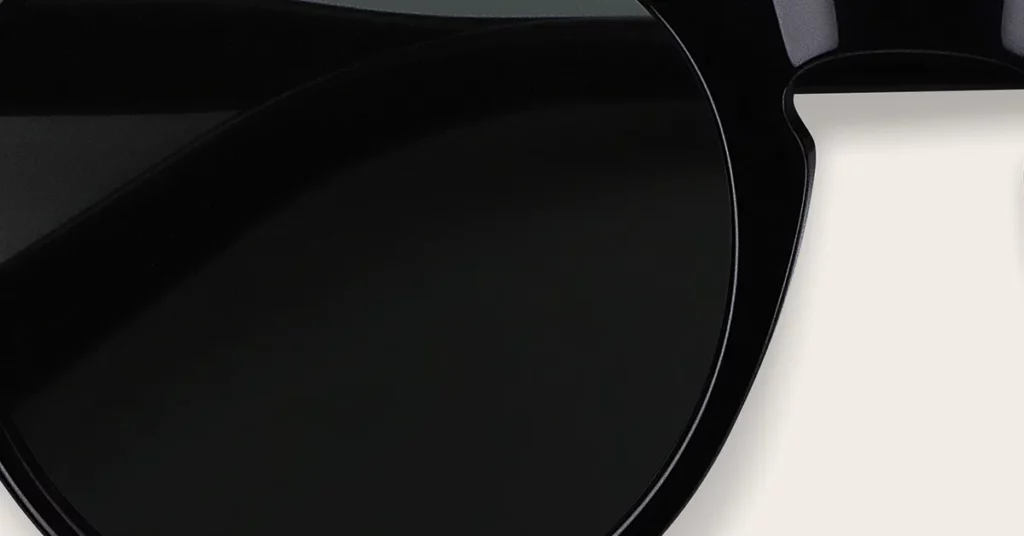
The “3-Step QC Documentation” Model
This model provides a simple workflow for logging defects, citing tolerance failures, and generating a professional QC report.
Best Practice: When a defect is found, you must immediately photograph and log it. Take one wide shot to show the location and one close-up to show the detail. Describe the defect with neutral, factual language (e.g., “2mm scratch on outer left temple”) and classify it as Major or Minor.
Most Importantly: To make a rejection objective, you must cite the specific, pre-agreed standard that failed. For example: “Defect #004: Pantoscopic Tilt. Classification: Major. Finding: 9.5°. Specification (Tier 2): 7.0° ± 1.0°. Result: Fails.” This transforms a subjective complaint into an objective, data-based rejection that is difficult for a supplier to dispute.
The Bottom Line: Once the inspection is complete, all logged and cited defects are compiled into a formal QC report. This report summarizes the findings, provides a clear pass/fail verdict based on the AQL results, and includes all photographic evidence. This professional report is the official document used to communicate the failure to your supplier.
Anatomy of a Professional QC Report
A professional report has a clear and logical structure that allows anyone to understand the findings at a glance.
- Section 1: The Header: This contains all top-level information: the Purchase Order (PO) number, SKU, inspection date, lot size, sample size, and the AQL standards that were applied.
- Section 2: The Verdict: A clear, unambiguous statement at the top: PASS, FAIL, or ON HOLD. This verdict is determined solely by the AQL results.
- Section 3: The Summary: A quick overview table showing the total number of Critical, Major, and Minor defects found versus the maximum number allowed by the AQL standard.
- Section 4: The Detailed Findings: The core of the report. This is an itemized list of every single defect found, including its description, classification, and corresponding photographic evidence.
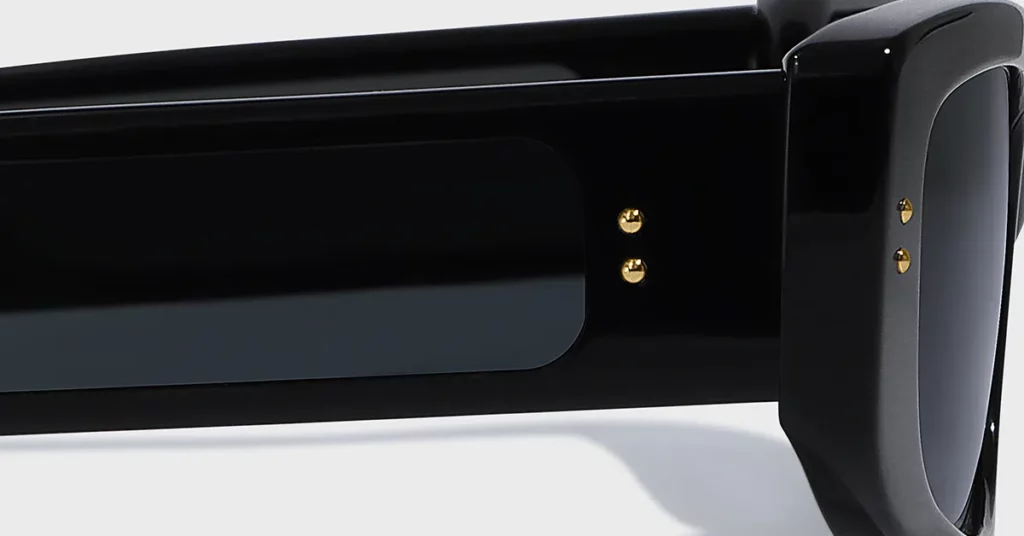
The Business of Quality: Integrating QC into Your Strategy
The True Cost of a Defect: Understanding Total Cost of Quality (TCQ)
Definition: Total Cost of Quality (TCQ) is a financial framework that measures all costs associated with your quality efforts. It proves that proactive investments in preventing defects are significantly cheaper than the costs of reacting to them after they have been created. This includes the Cost of Good Quality (money spent to ensure things are right) and the Cost of Poor Quality (the penalty you pay when they are wrong).
Simple Analogy: Managing TCQ is like maintaining your car. The Cost of Good Quality is the money you spend on regular oil changes and tune-ups (prevention and appraisal). The Cost of Poor Quality is the massive bill you face when the engine seizes because you skipped that maintenance (internal and external failure). A small, consistent investment prevents a catastrophic expense.
The Cost of Good Quality includes Prevention Costs (creating detailed tech packs, supplier training) and Appraisal Costs (inspections). The Cost of Poor Quality includes Internal Failure Costs (scrap, rework) and External Failure Costs (returns, warranty claims, reputation damage). A $500 inspection that catches a defect easily prevents thousands of dollars in external failure costs.
What to Do When an Inspection Fails: A 3-Level Escalation Framework
When a shipment fails inspection, you need a clear plan to resolve the issue professionally and effectively.
- Level 1: Formal Supplier Notification: The moment an inspection fails, send the complete QC report to your supplier. State that the shipment is rejected and request a formal Supplier Corrective Action Report (SCAR) detailing their plan to fix the issue and prevent it from happening again.
- Level 2: Senior Management Escalation: If the supplier is unresponsive or it’s a recurring issue, escalate to senior management at both companies. This communication should focus on the commercial impact—production delays, risks to product launches, and potential financial penalties.
- Level 3: Executive Hold: For systemic failures, the final step is to place a formal hold on payments and open purchase orders. This signals that the relationship is at risk and forces the supplier’s highest levels of management to engage and resolve the root cause.
The Hidden Failure Point: Why Material & Chemical Compliance Matters
Critical Warning: A frame can be dimensionally perfect but still be a critical failure if its materials are unsafe. A common hidden failure is excessive nickel release from metal frames, which can cause allergic contact dermatitis for sensitive individuals. This is not a quality issue; it is a health and safety failure.
Most Importantly: Selling products with non-compliant materials exposes your brand to severe risks, including forced product recalls, large fines, and being barred from key markets. You must comply with international standards like REACH in the European Union and California’s Proposition 65 in the United States.
Best Practice: The only way to manage this risk is to demand material certifications and full lab test reports from your suppliers for every component. These documents must prove compliance with all relevant standards for your target markets. This should not be a one-time check; it must be verified for every new production run.
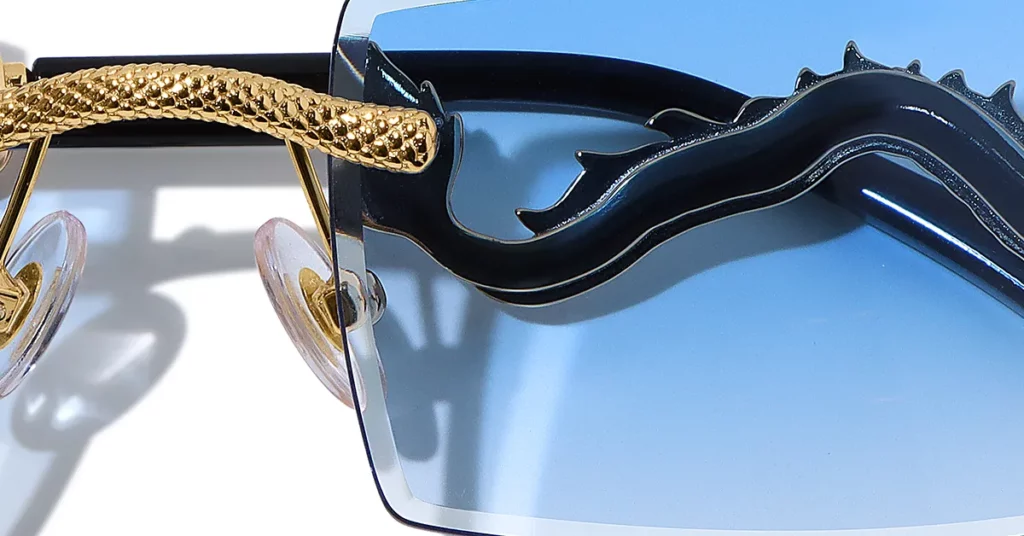
Conclusion
Moving from a simple checklist to a managed system is the key to protecting your brand. By integrating statistical sampling, a Golden Sample, and our Kssmi Quality Framework, you transform quality control from a reactive task into a proactive, data-driven business process. This systematic approach is the most effective way to reduce defects, build strong supplier relationships, and consistently deliver products that delight your customers. Ready to build your own quality system? Contact us to see how we partner with brands to ensure excellence from design to delivery.
Frequently Asked Questions
1. What are the most common Major defects found during an eyewear inspection?
The most common Major defects are cosmetic issues like visible scratches, chips, or blemishes in the coating. Functional problems like stiff or loose hinges and frames that are out of alignment are also frequent findings.
2. How do I create a “Golden Sample” with my manufacturer?
After finalizing your design, your manufacturer will produce pre-production samples. You provide feedback through several revisions until a sample is perfect. You then formally approve, sign, and date multiple identical versions of this sample to serve as the official standard.
3. Can I reject an entire shipment if the AQL fails?
Yes. The AQL agreement provides the objective basis for this decision. If the defect count in the sample exceeds the AQL limit, you have the contractual right to reject the entire lot, requiring the supplier to sort, rework, or remake the batch.
4. What is the single most important measurement to get right for customer fit?
The total frame width is arguably the most critical measurement for a comfortable fit, as it determines if the frame is scaled correctly to the wearer’s face. For optical performance, however, pantoscopic tilt is the most critical geometric measurement because errors can directly impact a prescription’s effectiveness.
5. How do I tell my supplier an inspection has failed without damaging the relationship?
The key is to be objective and data-driven. Notify them promptly with the official report, framing the conversation around the data, not blame. Ask for their corrective action plan to show you are focused on fixing the process together for long-term success.
